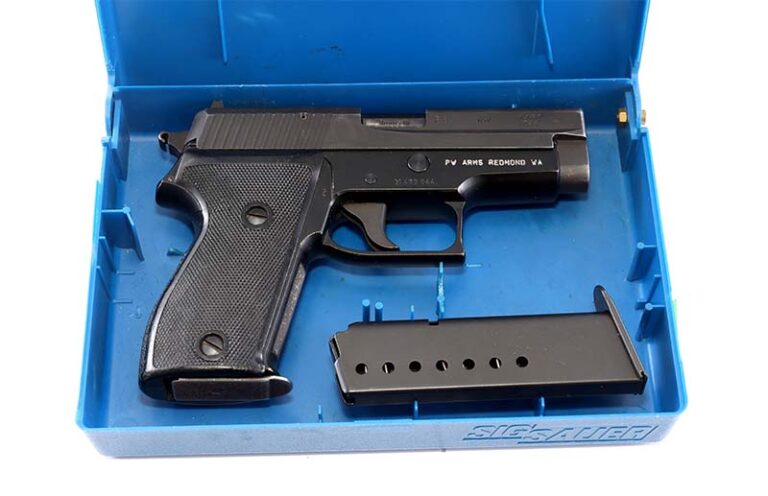
The author reviews a West German LE surplus Sig P6, a handgun that’s remained practical while becoming collectible.
It was the early 1970s, and European police forces had a new problem: terrorists. Those LE officers had a miscellaneous assemblage of .32s and .380s in their armories … while the bad guys were starting to use 9mm SMGs.
Not good.
So, the West German Federal police issued a request for a new sidearm, and it was to be in 9mm Parabellum. HK offered up the PSP (which we know as the P7), and Walther offered up a newly built P38 with a shorter barrel, dubbed the “P5.” In-between, the tasking authority dubbed the Sig entry as the P6, the model we know as the P225.
All of the new pistols accepted for use were single-stack 9mm pistols, and that was considered a big step up by the police forces (compared to packing a .32 Auto, any of them would be). All three were approved, and each law enforcement agency or administrative state was free to purchase and issue any of them. The P5 (P38) wasn’t popular, and the P7 (HK) was the more expensive one, so most states bought P6s.
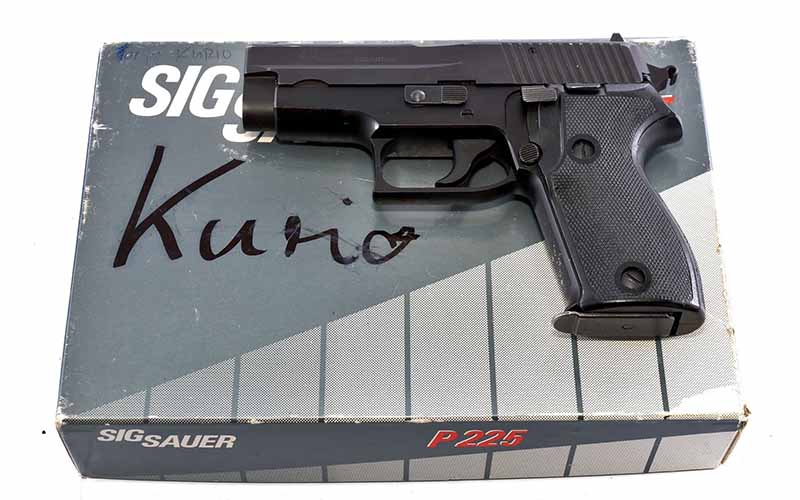
Rising To The Top
The P6 is basically a pared-down single-stack P226, or a compact P220. It’s smaller and lighter than either, and since it has a single-stack magazine, it’s easier to grasp for those with smaller hands. It’s a traditional double-action system, trigger-cocking on the first shot and with the hammer cocked by the slide on subsequent shots. There’s a hammer-dropping safety lever on the left side, and this safely lowers the hammer after it has been cocked. Manufactured in Eckernförde, Germany, at the J.P. Sauer plant (which Sig bought a controlling interest in so they’d qualify for contracts), most German states purchased the P6 due to it costing less than the other two pistols.
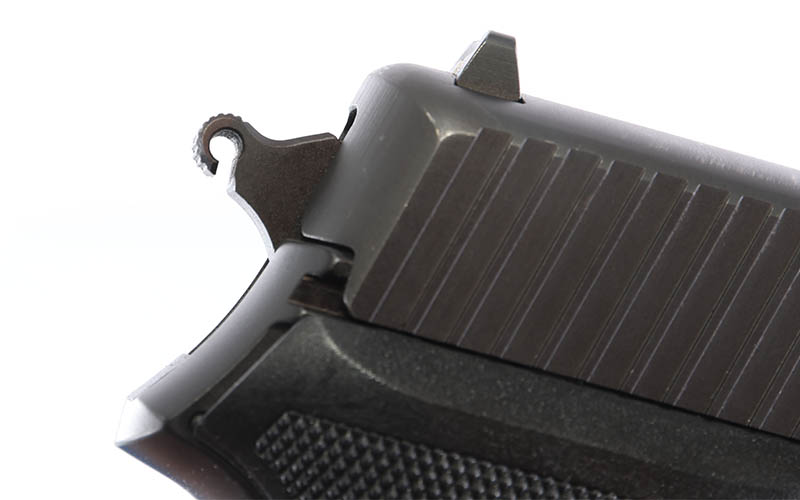
One interesting detail found on the P6 pistols, and not on the P225 pistols, is the hammer. The German police standards called for a special hammer, where the rowel of the spur has a notch cut through it. This is the Deformationssporn, or “deformation spur.” It exists for one purpose only: to determine if the pistol in question has been dropped and fell on its hammer. If that happened, the spur would be bent and not be bendable back—uh-oh. The obsession with pistols being dropped, especially on the hammer, is a mystery, but once something is written into the specs, it’s there until the end of time.
The P6 trigger pulls are reported to be heavier than the P225s exported to the U.S., but I don’t have a representative sample to check. I also don’t know if this was due to the West German police wanting to reduce ADs, or that they had to deal with harder primers, or Americans wouldn’t put up with a heavier trigger pull. Mine isn’t bad at all.
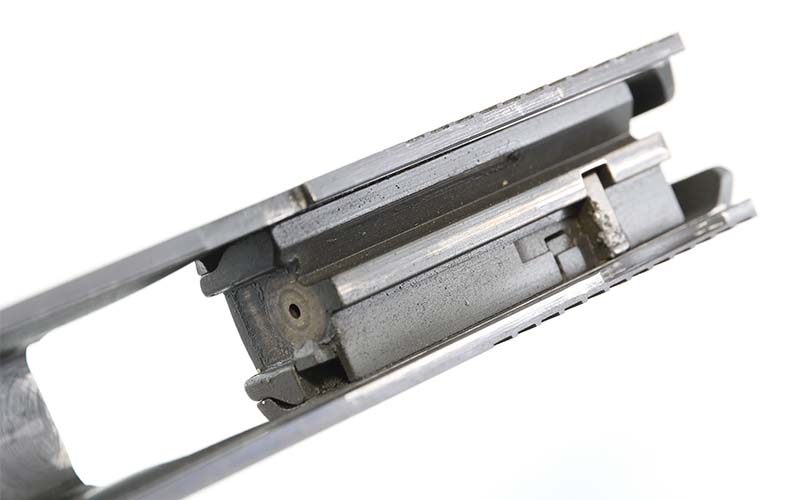
One aspect of the Sig design (that created part of the lower cost) was the slide manufacture. The slide was a heavy (really thick gauge) steel stamping, with the muzzle end block welded to it, and the breechblock pinned into it. The earliest P226s are built like this, as well as the early P220. The feed ramp of the barrel was designed to be best-feeding for FMJ ammunition (can’t have any of those nasty JHPs now, can we?), and some report that their P6s don’t like JHPs. Neither of mine has ever noticed.
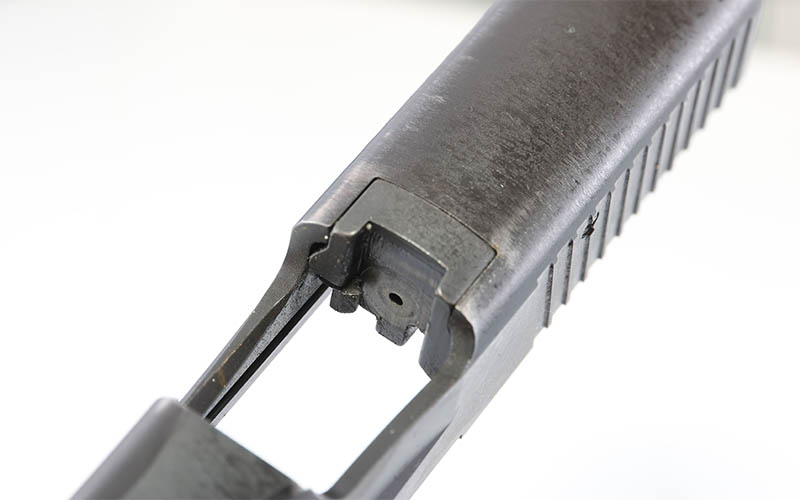
Two, But Different
I actually have two, and they came in different boxes. One came in a fiberboard box, looking very commercial, and the other in a hinged hard plastic (blue) box, apparently the standard police issue box. This is where collecting can come in. Both boxes had the name of the officer to whom they were issued (last names of Kurio and Schaniejel). And my two came in through two different importers: PW Arms and Century Arms.
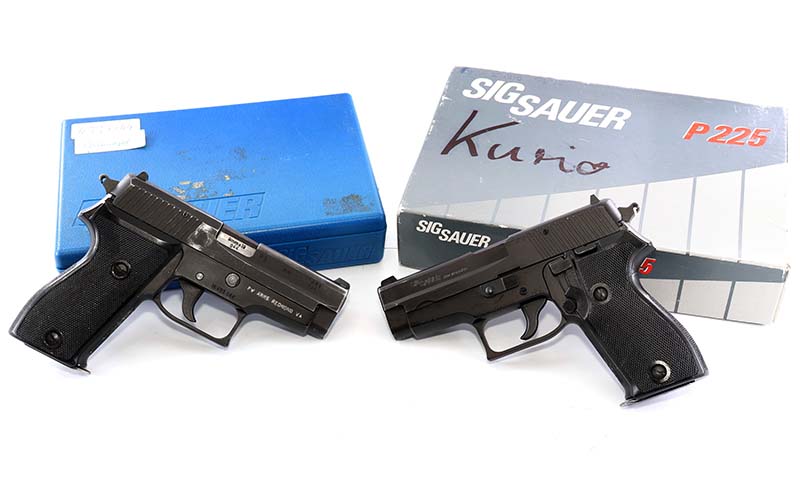
They also span most of the period of issue. The older one has a “proofmark,” or acceptance date, stamped on it of 1/80, while the other is stamped 12/95. Both came from the German state of Nordrhein-Westfalen, and a lot of the ones you’ll see (if you go looking) will be. It happened to be the most populous state in West Germany (now all of Germany), half again as many people as either of the next two. (No big surprise there. It’s the state encompassing the Rhine-Ruhr industrial area.)
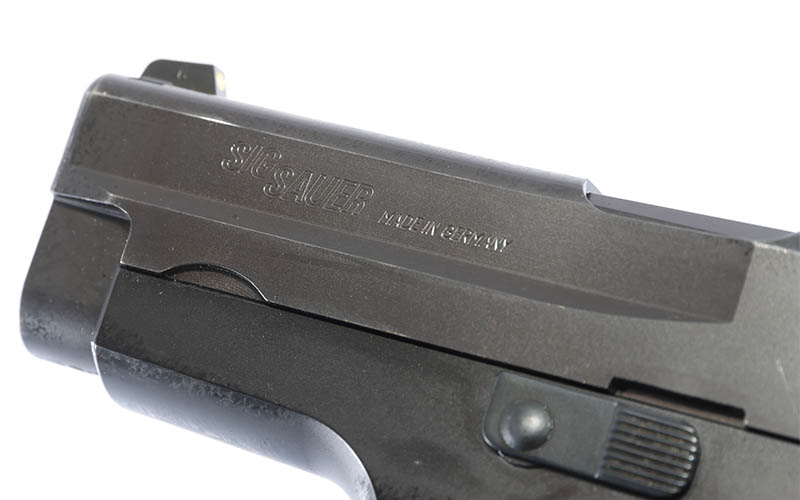
And, clearly, they used them; by December of 1995, the new standard for police pistols had been adopted, and the P6 was on the way out.
The grips are the same between the P6 and the original P225, as are the magazines and internals. They differ only in markings. However, when Sig went and updated the P225 to the P225A1, they changed the magazines and pretty much everything else. The P6/P225 magazine has a reputation of having feed lips that don’t like to always be loaded. Over time, they’ll wear, and this causes failures to feed.
We Americans expect (and get) magazines that can be left loaded literally for decades and still work. The European police department’s usual process is for an officer to be issued his pistol, magazines and ammo when he reports for duty, load up, go to work, finish his shift, unload and turn it all in. In that process, who would notice a problem? A magazine feed lip that doesn’t like to be loaded for years? They stay loaded eight hours at a time … no problem here.
Well, Sig updated the magazine design, and it’ll withstand American use, but it’s not, alas, compatible with the old P6/P225 (rats!). Grips don’t interchange, nor do much of any other parts. So, if you need to repair or want to upgrade, you need to be very careful, as a lot of sellers don’t know or care between P225 and P225A1 parts.
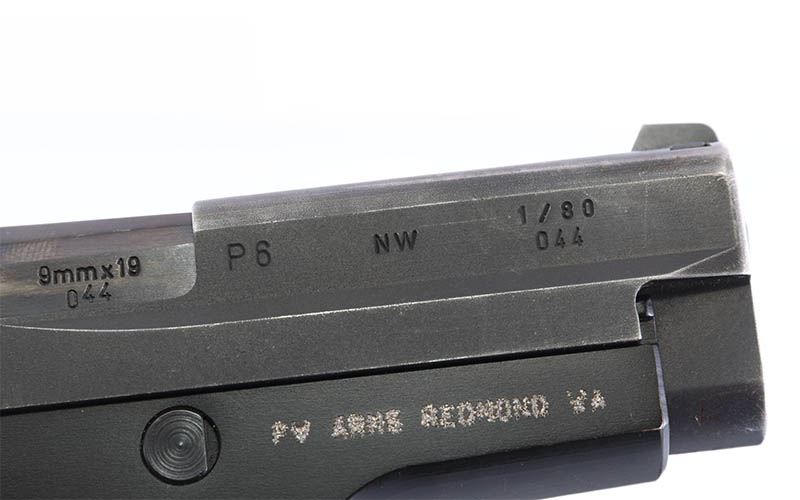
The West German P6s were marked as to the state that bought them, and mine are marked with the date of manufacture and the state on the right side of the slide, along with the last three digits of the serial number. They don’t have the commercial Sig markings, while the P225 imports do. However, the P6s are marked on the left side of the slide, and the left side of the barrel chamber: “Sig Sauer.” They also have the German-law required proof marks, and here things get interesting for my pair.
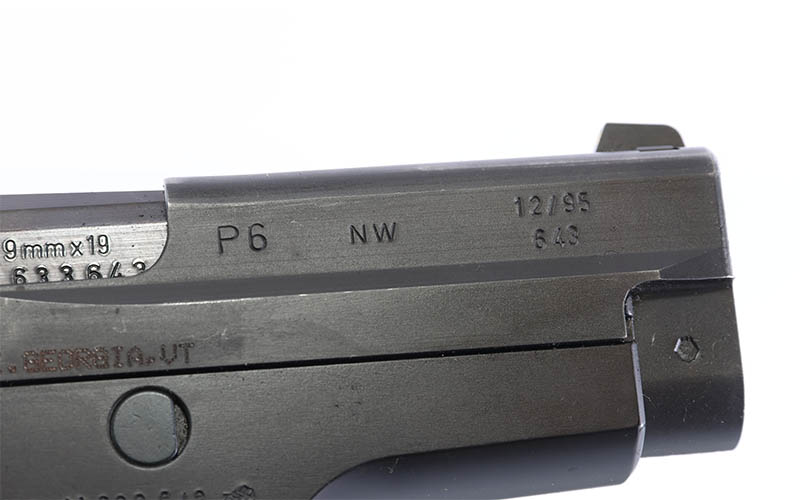
The slide nose undersurface is the usual place to mark them, and the markings on mine differ. You’d think, with the P6s being built at one plant, and in this case with them being purchased by Nordrhein-Westfalen, that the proofmarks would be the same. Nope. More collectability variance. The surplus ones will, of course, have markings from the importer, most of which were through Century Arms International, but not all.
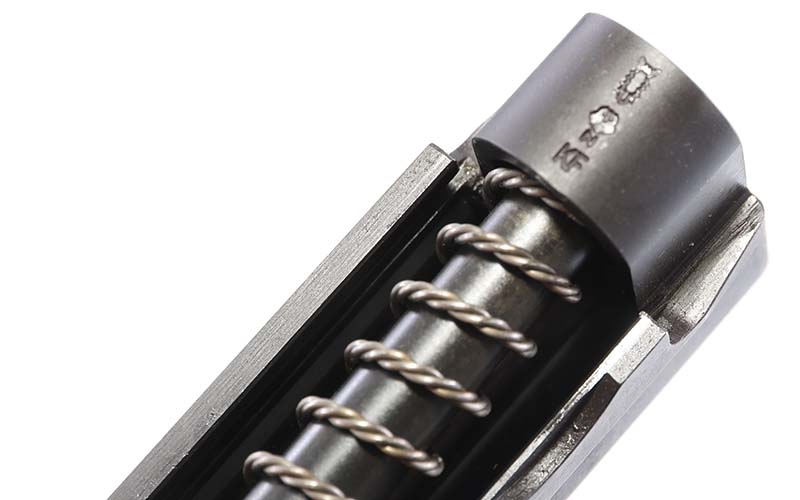
Calculated Rarity
You may wonder why you don’t see (or didn’t back when they were coming into the U.S.) many of the P5, P6 and P7 pistols. What I’ve been told is this: When the standards changed back in the mid 1990s, the states (each German state is like a U.S. State with their own responsibilities and authorizations, etc.) were told by the Federal government they could get new pistols from the new list. And the Federal government would trade them, one-for-one, or whatever they needed, provided they traded the old ones in.
If they didn’t trade them in, then they’d have to purchase new ones out of their own budget, and the old ones would have to be disposed of within the requirements of the very strict German laws concerning firearms. Taking the easy way, they just handed them over and got new ones.
Some states didn’t, or they at least tried a few lots of test sales, and that’s how we got the ones we got. This amounted to tens of thousands of P6s, but not the whole lot of them. Still, they’re common enough and less expensive (curiously) than the P225 or P225A1, so if you want to get into collecting easily and without breaking the bank, this is one place to start.

I tested mine when I first got them and found that they were, not surprisingly, just like all the other Sigs I’d shot up to that point: accurate, reliable, easy to take apart and clean, and resemble a Sig (which is a good look). I seriously considered using one as an everyday carry pistol, but the background on the magazines was just enough to give me pause. It may be true, or it may take years to happen, but who wants to run the risk?
I could load up a magazine and leave it loaded for a few years (I have tests like that going on right now; the longest one is up to 14 years), but I can’t trust it until I know and that’s years away. Plus, if the test magazine does fail, I’ve just thrashed one of a very few I have.
So, mine are range queens and teaching pistols for new shooters. The grip is big enough to hold, but small enough to be managed by shooters with small hands. While the DA pull is more than I’d want a new shooter to struggle with, the SA trigger pull is plenty nice enough and yet not too light. And either are accurate enough that a new shooter who pays attention will hit what they’ve aimed at.
Collectible, but usable, suitable for teaching new shooters, but fun to shoot for the experienced. It uses standard 9mm ammunition (unlike some historical pieces I have in the safe) and doesn’t mangle the brass. Made by the Swiss in Germany for Germans, but now here in America. What’s not to like?
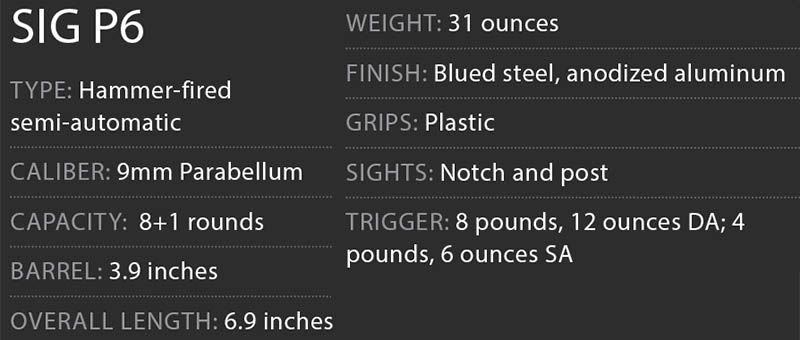
Editor’s Note: This article originally appeared in the March 2024 issue of Gun Digest the Magazine.
More On Handguns:

Next Step: Get your FREE Printable Target Pack
Enhance your shooting precision with our 62 MOA Targets, perfect for rifles and handguns. Crafted in collaboration with Storm Tactical for accuracy and versatility.
Subscribe to the Gun Digest email newsletter and get your downloadable target pack sent straight to your inbox. Stay updated with the latest firearms info in the industry.
Read the full article here

